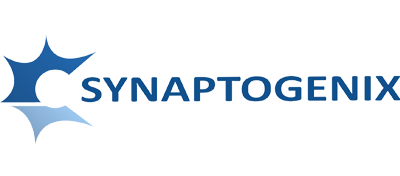Neurotrope, Inc. Collaborating with Dr. Paul Wender and Stanford University on Bryostatin Analogues
Plantation, FL. – May 20, 2014 – Neurotrope, Inc. (OTCQB: NTRP) (the “Company”) announced today that it has signed an agreement with Stanford University to study and, along with Dr. Paul Wender, investigate certain analogs of bryostatin, referred to as “bryologs”, as potential clinical candidates for the treatment of various neurological disorders. This collaboration is framed by a license agreement forged between Stanford University and Neurotrope, which provides the Company with exclusive rights to make, use or sell certain bryologs for commercial application in therapeutic applications for central nervous system disorders, lysosomal storage diseases, stroke, cardioprotection and traumatic brain injury.
Bryostatin is Neurotrope’s Phase 2 clinical candidate being investigated currently for the treatment of Alzheimer’s Disease. Bryostatin potently activates the enzyme PKCepsilon (“PKC”), and in preclinical in vivo models this effect has been shown to play a role in slowing or reversing several neurodegenerative disease processes.
Bryostatin is a natural product produced by a marine microorganism called Bugula neritina and is isolated from biomass harvested from the ocean. Several total syntheses of this complex product have been achieved in recent years in various academic chemistry laboratories, and these approaches represent an alternative source of this drug.
Dr. Wender’s laboratory has synthesized a large family of bryologs over a number of years as part of a research program to define the essential pharmacophore (molecular features) critical to bryostatin’s potent biological activity. The bryologs are easier to produce than bryostatin due to their less complex chemical structures. They represent a rich collection of potential drug candidates, some of which are expected to be advanced to clinical trials by Neurotrope for the treatment of several neurodegenerative diseases such as ischemic stroke, Fragile X Syndrome, traumatic brain injury and Alzheimer’s Disease.
Dr. James New, the Company’s President and Chief Executive Officer, stated “I’ve admired Dr. Wender’s work for many years and am truly excited to have established this collaboration with his laboratory. His wealth of knowledge and experience will provide significant value to our product development team which expects to advance a bryolog drug candidate into clinical development in the 2015 timeframe.”
About Neurotrope
Neurotrope was formed in October 2012 to develop and market two product platforms; a drug candidate called bryostatin for the treatment of Alzheimer’s Disease. A Phase 2a study with bryostatin in the treatment of Alzheimer’s Disease is scheduled to commence in June of this year. Company has initiated several other preclinical research programs exploring the utility of either bryostatin or the bryologs for the potential treatment of several other neurodegenerative diseases. The Company is also evaluating a minimally invasive diagnostic test for Alzheimer’s disease using biomarkers whose expression is mediated by PKC, and intends to pursue development of selected other technology platforms with applications related to the treatment of Alzheimer’s Disease and other neurodegenerative disorders based on our current licensed technology or technology available from third party licensors or collaborators.
Please visit www.neurotropebioscience.com for further information.
Forward-Looking Statements
Any statements contained in this press release that do not describe historical facts may constitute forward-looking statements. Forward-looking statements may include, without limitation, statements regarding (i) the plans and objectives of management for future operations, including plans or objectives relating to the development of commercially viable pharmaceuticals, (ii) a projection of income (including income/loss), earnings (including earnings/loss) per share, capital expenditures, dividends, capital structure or other financial items, (iii) the Company’s future financial performance and (iv) the assumptions underlying or relating to any statement described in points (i), (ii) or (iii) above. Such forward-looking statements are not meant to predict or guarantee actual results, performance, events or circumstances and may not be realized because they are based upon the Company’s current projections, plans, objectives, beliefs, expectations, estimates and assumptions and are subject to a number of risks and uncertainties and other influences, many of which the Company has no control over. Actual results and the timing of certain events and circumstances may differ materially from those described by the forward-looking statements as a result of these risks and uncertainties. Factors that may influence or contribute to the inaccuracy of the forward-looking statements or cause actual results to differ materially from expected or desired results may include, without limitation, the Company’s inability to obtain adequate financing, the significant length of time associated with drug development and related insufficient cash flows and resulting illiquidity, the Company’s inability to expand the Company’s business, significant government regulation of pharmaceuticals and the healthcare industry, lack of product diversification, volatility in the price of the Company’s raw materials, existing or increased competition, results of arbitration and litigation, stock volatility and illiquidity, and the Company’s failure to implement the Company’s business plans or strategies. These and other factors are identified and described in more detail in the Company’s filings with the SEC, including the Company’s Annual Report of Form 10-K for the fiscal year ended December 31, 2013 and its Form 10-Q for the fiscal quarter ended March 31, 2014. The Company does not undertake to update these forward-looking statements.
For additional information, please contact:
Robert Weinstein
Chief Financial Officer
(914) 295-2765
rweinstein@neurotropebioscience.com
www.neurotropebioscience.com

